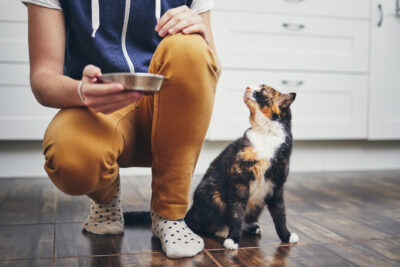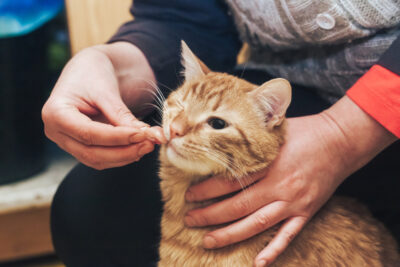Diabetic Cat Food: What to Know
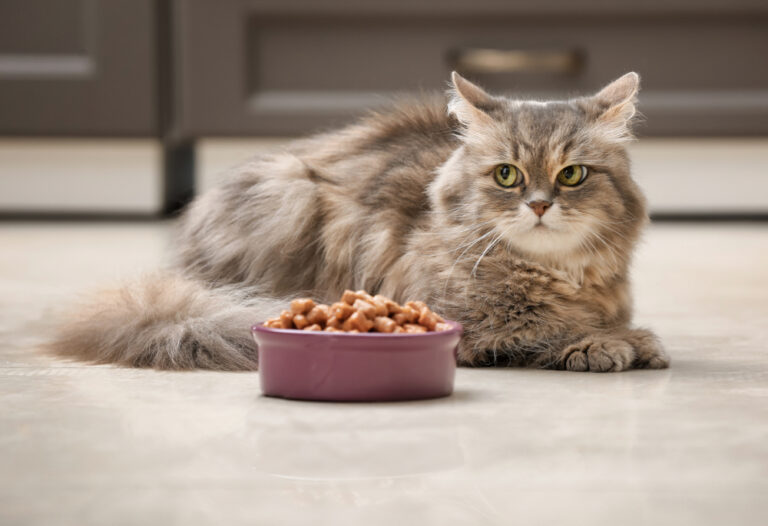
All featured products are chosen at the discretion of the GreatPetCare editorial team and do not reflect a direct endorsement by the author or reviewer.
Diabetes is a common hormonal disorder in cats that affects the body’s ability to process sugar, with up to 1 percent of cats developing diabetes at some point in their lives (1). Pet parents of cats with diabetes will take an active role in their pet’s treatment plan. In addition to insulin or diabetes medications, dietary modification is an important component of managing diabetes in cats.
You may be wondering if your cat needs a diabetic cat food to help control their sugar levels. We’ll cover prescription and non-prescription cat food for diabetic cats and other tips for dietary management of feline diabetes.
What to Feed a Diabetic Cat
Diet is an important part of a feline diabetes treatment and management plan.
Diabetic cats thrive on routine and consistency. You’ll want your cat to eat a set amount of a specific food at certain times of day. For cats who are grazers, you’ll still want to provide measured amounts. Automatic cat feeders can provide multiple, measured meals throughout the day to allow your cat to continue their grazing behavior. If you are inconsistent in what you feed your cat, or if you give your cat an inappropriate diet, high-calorie treats, or human foods, your cat’s blood sugar may become more difficult to control.
If a cat’s blood sugar is not adequately controlled with diet, insulin, and/or medications, you will see a resurgence of diabetes symptoms. These symptoms include excessive thirst and urination, dehydration, weight loss, weakness in the hind legs, and increased appetite. Cats with poorly managed diabetes can also develop kidney disease because of high sugar levels, damaging the filtering structures of their kidneys.
While it is possible for your cat to eat regular food while undergoing treatment for diabetes, you should also speak with your veterinarian about diabetic cat foods. If your cat continues to eat their regular diet, the veterinarian will focus on managing your pet’s diabetes through portion control and insulin or anti-diabetic medications.
Without dietary consistency, your cat may need to visit the veterinarian to reassess their management plan. This is not only stressful for the cat, but it adds to the financial and emotional cost of managing diabetes in cats.
What Is Diabetic Cat Food?
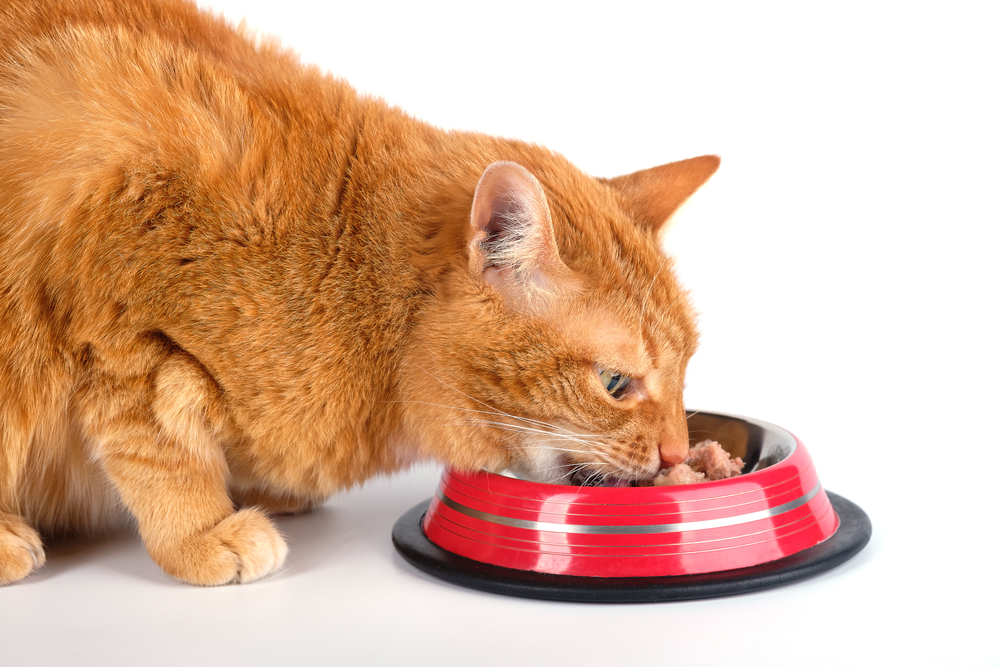
Food for cats with diabetes tends to have a low carbohydrate content and a high protein content. There is still debate about target levels for macronutrients in diabetic foods. The American Animal Hospital Association (AAHA) guidelines for diabetes management state that at least 40 percent of the diet’s metabolizable energy should come from protein, while carbohydrates should be limited to 12 percent of the diet’s metabolizable energy (2). Some expert opinions place this percentage even lower, around 7 percent.
The most effective food for your diabetic cat is generally going to be a canned cat food. Diabetic wet cat food tends to have lower carbohydrate levels than kibble diets, as well as fewer calories in a specified amount. Portions are easy to measure, and your cat will naturally take in more water.
For cats who do not like canned diets, there are prescription kibble diets available.
Best Diabetic Cat Foods
Diabetic cats can be managed with prescription or over-the-counter diets as long as they meet the cat’s daily requirements while reaching the goals of diabetes foods.
Best Prescription Cat Foods for Feline Diabetes
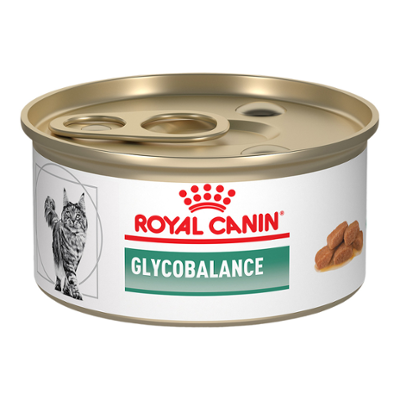
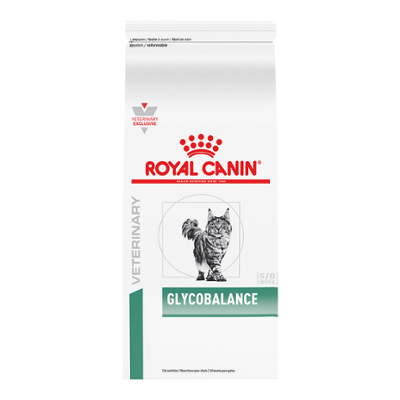
Founded by a veterinarian in 1968, Royal Canin’s nutritional formulations have been based in science for the nearly 60 years they’ve been in operation. Royal Canin works with veterinarians, nutritionists, and scientists to develop their prescription diets, including Royal Canin Feline Glycobalance. The goal of this diet is to support healthy blood glucose levels after the cat has a meal.
Highlights
- Comes in both canned and dry formulations
- Canned version has 54 percent less starch than an adult maintenance canned diet
- Dry version has 29 percent less starch than the adult maintenance food
- Contains prebiotics to support healthy bacteria in the gut
- High protein content to maintain muscle mass
- Promotes a urinary environment that is unfavorable to the development of struvite and calcium oxalate crystals
Things to Consider
- Requires a prescription
- Higher cost than over-the-counter diets
- Higher carbohydrate content than some of the other prescription diets
Hill’s Prescription Diet GlucoSupport m/d

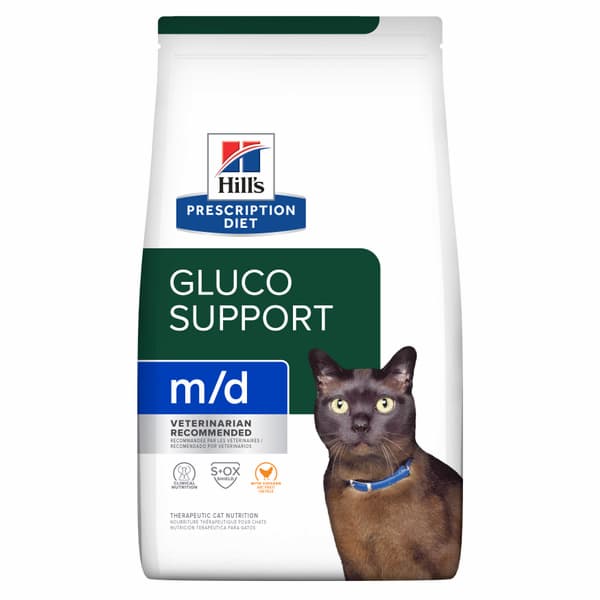
The first Hill’s diet was prepared by a veterinarian in 1948. Now, Hill’s employs over 220 veterinarians, qualified nutritionists, and food scientists to ensure their diets are science-led and based in clinical studies. Hill’s Prescription Diet GlucoSupport m/d is formulated to manage blood sugar and help cats lose weight. Given that obesity is a major risk factor for diabetic cats and that blood glucose is easier to control when a cat reaches their ideal weight, this is a major benefit to the cat.
Highlights
- Comes in both canned and dry formulations
- High protein and optimal carbohydrate levels to help manage blood sugar
- Includes clinically proven antioxidants
- Formulated to promote weight loss in addition to blood sugar control
- Formulated to promote urinary environment that reduces risk of developing struvite and calcium oxalate crystals
Things to Consider
- Requires a prescription
- Higher cost than over-the-counter diets
Purina ProPlan Veterinary Diets DM Dietetic Management
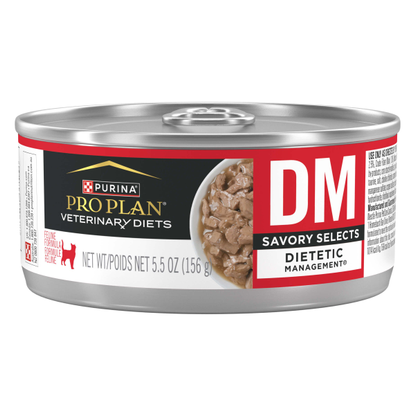
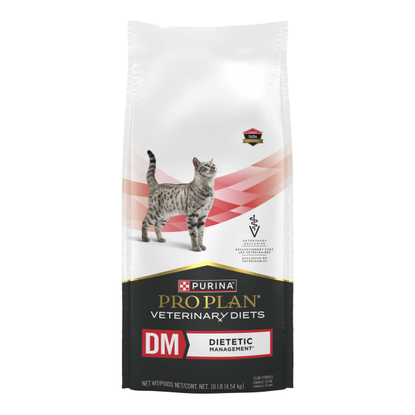
Purina ProPlan Veterinary Diets and Supplements are formulated with decades of research in mind, and the company’s network includes over 500 scientists, including veterinarians, behaviorists, and nutritionists. Their DM Dietetic Management formula is designed to support healthy blood glucose levels and maintain a patient’s lean body mass and an ideal body condition.
Highlights
- Comes in both canned and dry formulations
- High protein and optimal carbohydrate levels to help manage blood sugar
- Rich in antioxidants
- Formulated to promote urinary environment that is unfavorable to the development of struvite and calcium oxalate crystals
- Lower carbohydrate content than some of the other prescription options
Things to Consider
- Requires a prescription
- Higher cost than over-the-counter diets
Non-Prescription Diabetic Cat Foods
Diabetic cats can be managed with over-the-counter canned diets that meet the low-carb requirements of a diabetic cat food. In fact, some over-the-counter options have a lower carbohydrate content than prescription diets. For example, a lot of the Friskies classic pates, while not quite reaching the 40 percent benchmark for energy from protein, have very low carbohydrate levels, with carbs comprising 3–6 percent of caloric distribution. These foods can work for diabetic cats.
If you choose a non-prescription diet, it is best to consult with your veterinarian. Ensure that the diet meets the requirements for your pet’s maintenance nutritional needs by reviewing the AAFCO statement.
Diabetic Cat Food: Other Tips and Advice
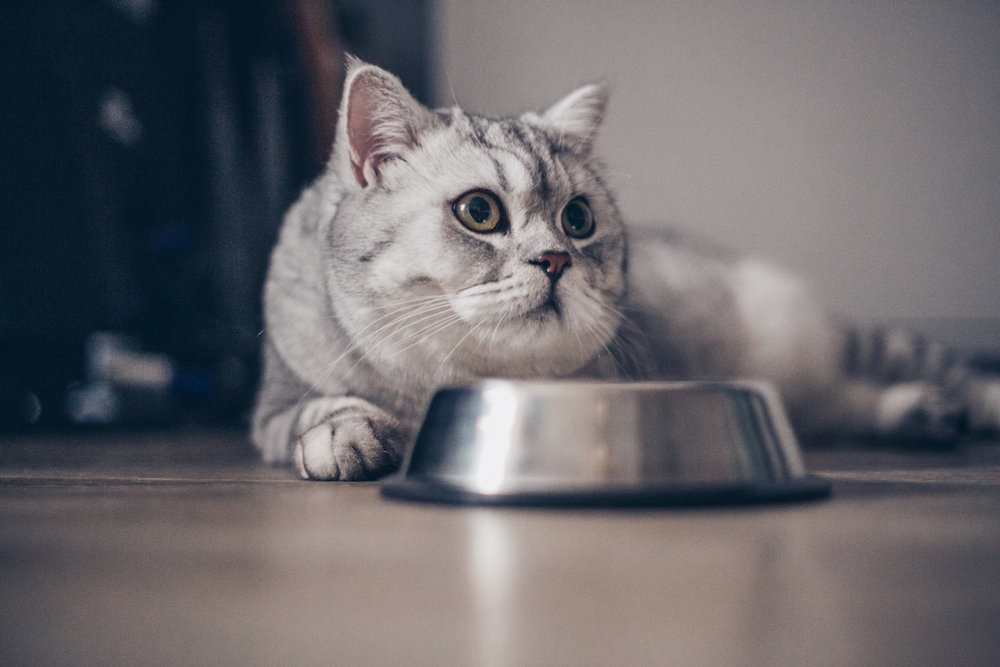
The transitional period in which you’re switching your pet’s diet and trying to get their glucose under control can be overwhelming. Consider the following tips to help remove some of the stress of this period:
Ask your veterinarian for a diet plan. Your veterinarian can recommend a specific food and calculate how many calories your diabetic cat could consume. For most diabetic cats, weight loss will be a component of a dietary plan. If you’re looking at a specific non-prescription diet, run it past the veterinarian.
Transition foods slowly. Changing your cat’s diet all at once can cause gastrointestinal upset, which may cause an aversion to the new food. Instead, switch your cat to their new food slowly over the course of about a week, adding a little more of the new food and removing a little bit of the old food each day.
Feed measured portions at specific times. Remember that diabetic cats thrive on routine! You will achieve the best control of your cat’s blood sugar by feeding a specific food in specific amounts at specific times. Follow your veterinarian’s instructions for when to administer insulin or anti-diabetic medications.
Contact your veterinarian if you notice any adverse reactions. If your cat starts vomiting, having diarrhea, or develops skin issues after switching foods, contact your veterinarian.
Monitor blood glucose at home. If you are comfortable, you can check your cat’s blood glucose at home. If interested, speak with your veterinarian about how to test your cat’s blood glucose. Most of the time, pet parents use a handheld blood glucose monitor and learn where to prick the cat’s ear to get a drop of blood. This can help you identify if your cat’s sugar levels are dangerously high or dangerously low.
References
- Rand, J. “Current understanding of feline diabetes: part 1, pathogenesis.” Journal of feline medicine and surgery vol. 1,3 (1999): 143-53. doi:10.1016/S1098-612X(99)90203-6
- Behrend, Ellen et al. “2018 AAHA Diabetes Management Guidelines for Dogs and Cats.” Journal of the American Animal Hospital Association vol. 54,1 (2018): 1-21. doi:10.5326/JAAHA-MS-6822
